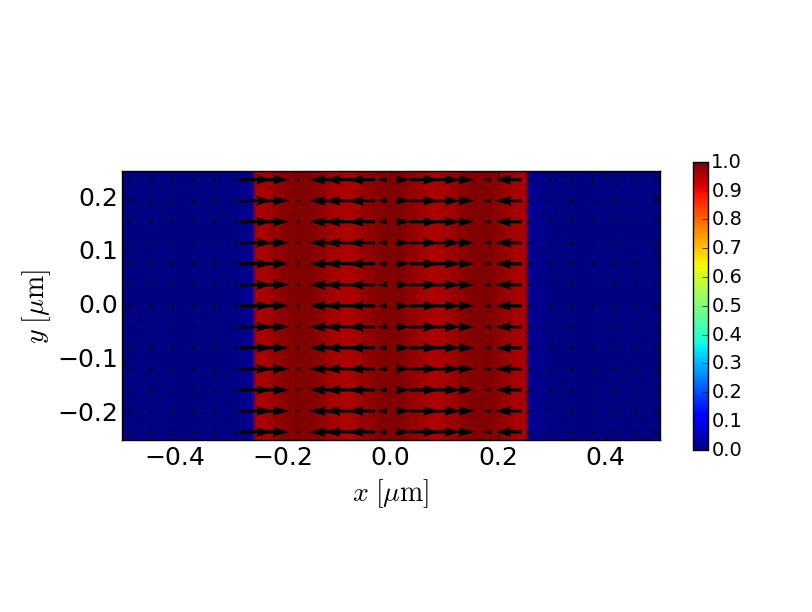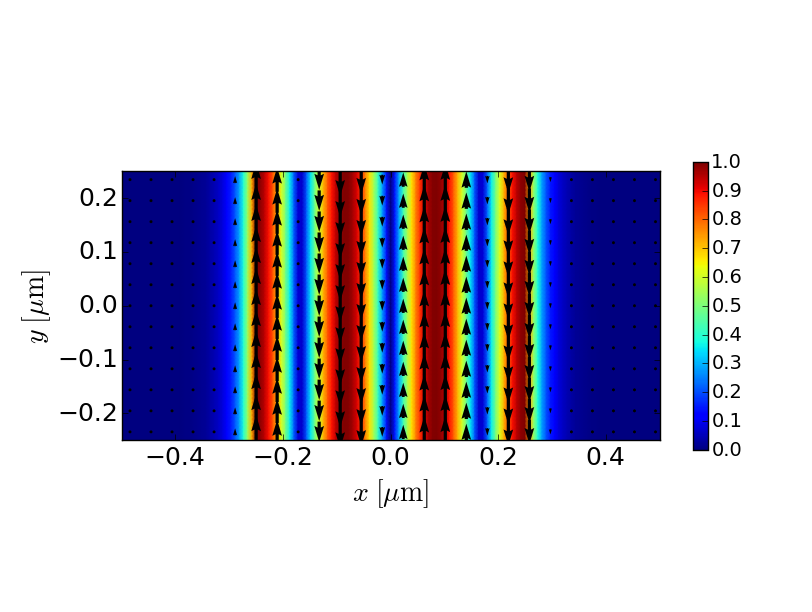Ecosyste.ms: Awesome
An open API service indexing awesome lists of open source software.
https://github.com/mnishida/PyMWM
Pymwm is a metallic waveguide mode solver witten in Python
https://github.com/mnishida/PyMWM
Last synced: 2 months ago
JSON representation
Pymwm is a metallic waveguide mode solver witten in Python
- Host: GitHub
- URL: https://github.com/mnishida/PyMWM
- Owner: mnishida
- License: mit
- Created: 2015-10-23T00:53:24.000Z (over 8 years ago)
- Default Branch: master
- Last Pushed: 2024-02-09T09:37:14.000Z (5 months ago)
- Last Synced: 2024-03-09T15:45:58.872Z (4 months ago)
- Language: Python
- Homepage:
- Size: 16.8 MB
- Stars: 4
- Watchers: 3
- Forks: 2
- Open Issues: 0
-
Metadata Files:
- Readme: README.md
- License: LICENSE
Lists
- awesome_photonics - pyMWM
README
# PyMWM
[![PyPI version][pypi-image]][pypi-link]
[![Anaconda Version][anaconda-v-image]][anaconda-v-link]
[![Lint and Test][github-workflow-image]][github-workflow-link]
[pypi-image]: https://badge.fury.io/py/pymwm.svg
[pypi-link]: https://pypi.org/project/pymwm
[anaconda-v-image]: https://anaconda.org/mnishida/pymwm/badges/version.svg
[anaconda-v-link]: https://anaconda.org/mnishida/pymwm
[github-workflow-image]: https://github.com/mnishida/PyMWM/actions/workflows/pythonapp.yml/badge.svg
[github-workflow-link]: https://github.com/mnishida/PyMWM/actions/workflows/pythonapp.yml
PyMWM is a metallic waveguide mode solver written in Python.
It provides the dispersion relation, i.e. the relation between propagation constant β = α + iγ (with phase constant α and attenuation constant γ) and angular frequency ω, for cylindrical waveguide, coaxial waveguide, and planer waveguide (slits). It also provides the distribution of mode fields.
## Version
0.5.6
## Install
#### Install and update using pip
```
$ pip install -U pymwm
```
#### Install using conda
```
$ conda create -n pymwm python=3.8
$ conda activate pymwm
$ conda install -c mnishida pymwm
$ pip install "ray[default]"
```
## Dependencies
- python 3
- numpy
- scipy
- pandas
- pytables
- ray
- matplotlib
- riip
## Uninstall
```
$ pip uninstall pymwm
```
or
```
$ conda deactivate
$ conda remove -n pymwm --all
```
## Usage
Let's consider a cylindrical waveguide whose radius is 0.15μm filled with water (refractive index : 1.333) surrounded by gold.
You can specify the materials by the parameters for [RII_Pandas](https://github.com/mnishida/RII_Pandas).
Wavelength range is set by the parameters 'wl_min' (which is set 0.5 μm here) and 'wl_max' (1.0 μm).
PyMWM compute the dispersion relation the two complex values, ω (complex angular frequency) and β (propagation constant).
The range of the imaginary part of ω is set from -2π/wl_imag to 0 with the parameter 'wl_imag'.
Usually, the cylindrical waveguide mode is specified by two integers, n and m.
The number of sets indexed by n and m are indicated by the parameters 'num_n' and 'num_m', respectively.
```
>>> import pymwm
>>> params = {
'core': {'shape': 'cylinder', 'size': 0.15, 'fill': {'RI': 1.333}},
'clad': {'book': 'Au', 'page': 'Stewart-DLF'},
'bounds': {'wl_max': 1.0, 'wl_min': 0.5, 'wl_imag': 10.0},
'modes': {'num_n': 6, 'num_m': 2}
}
>>> wg = pymwm.create(params)
```
If the parameters are set for the first time, the creation of waveguide-mode object will take a quite long time, because a sampling survey of βs in the complex plane of ω will be conducted and the obtained data is registered in the database.
The second and subsequent creations are done instantly.
You can check the obtained waveguide modes in the specified range by showing the attribute 'modes';
```
>>> wg.modes
{'h': [('E', 1, 1),
('E', 2, 1),
('E', 3, 1),
('E', 4, 1),
('M', 0, 1),
('M', 1, 1)],
'v': [('E', 0, 1),
('E', 1, 1),
('E', 2, 1),
('E', 3, 1),
('E', 4, 1),
('M', 1, 1)]}
```
where 'h' ('v') means that the modes have horizontally (vertically) oriented electric fields on the x axis. The tuple (pol, n, m) with pol being 'E' or 'M' indicates TE-like or TM-like mode indexed by n and m.
You can get β at ω=8.0 rad/μm for TM-like mode with n=0 and m=1 by
```
>>> wg.beta(8.0, ('M', 0, 1))
(0.06187318716518497+10.363105296313996j)
```
and for TE-like mode with n=1 and m=2 by
```
>>> wg.beta(8.0, ('E', 1, 2))
(0.14261514314942403+19.094726281995463j)
```
For more information, see the [tutorial notebook](https://github.com/mnishida/PyMWM/blob/master/docs/notebooks/00_tutorial.ipynb) and [User's Guide](https://pymwm.readthedocs.io/en/latest/).
## Examples
### Cylindrical waveguide
#### Propagation constants
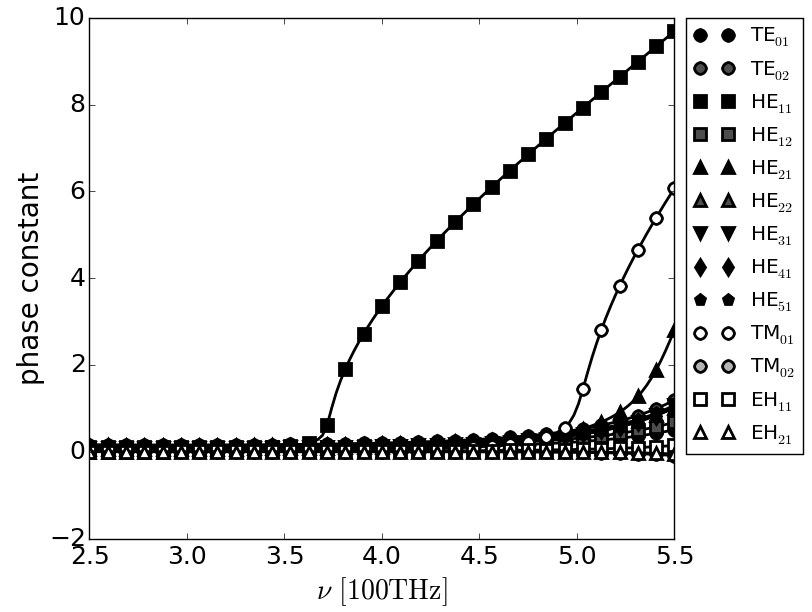

#### Electric field and magnetic field distributions
* TE01
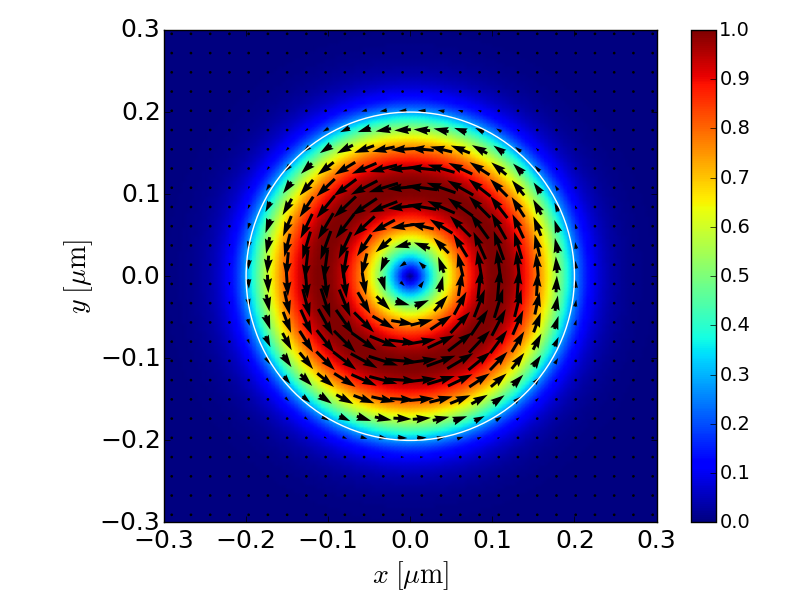
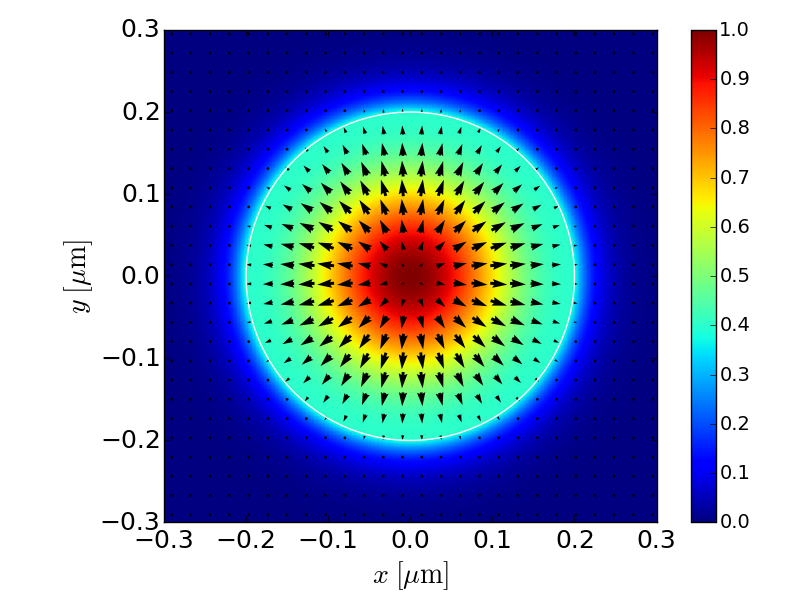
* HE11
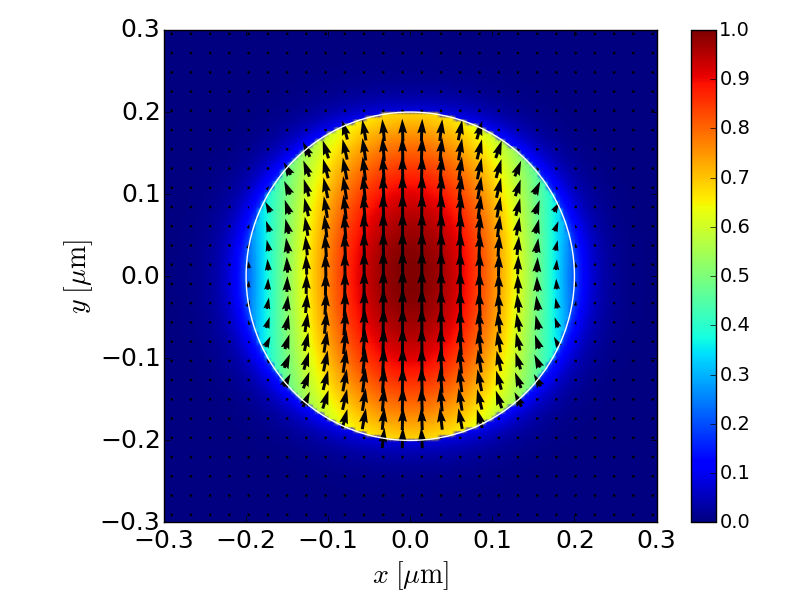
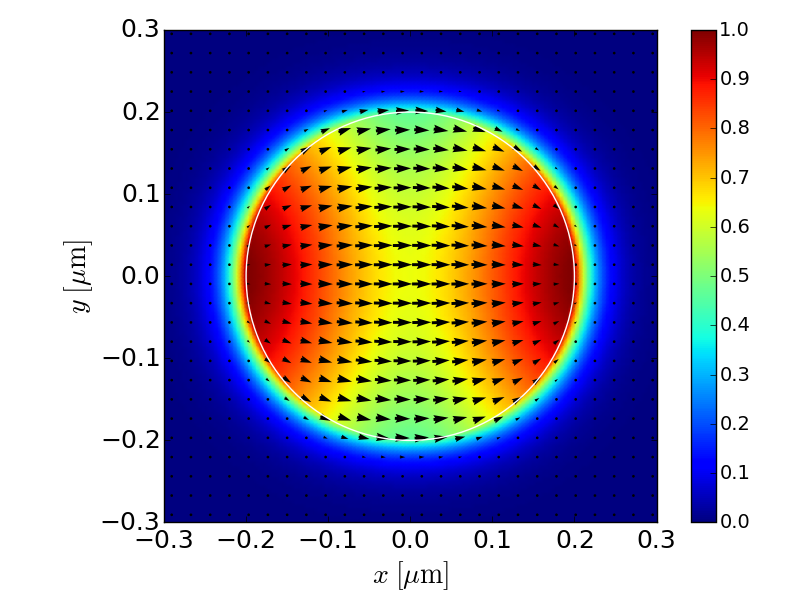
* HE12
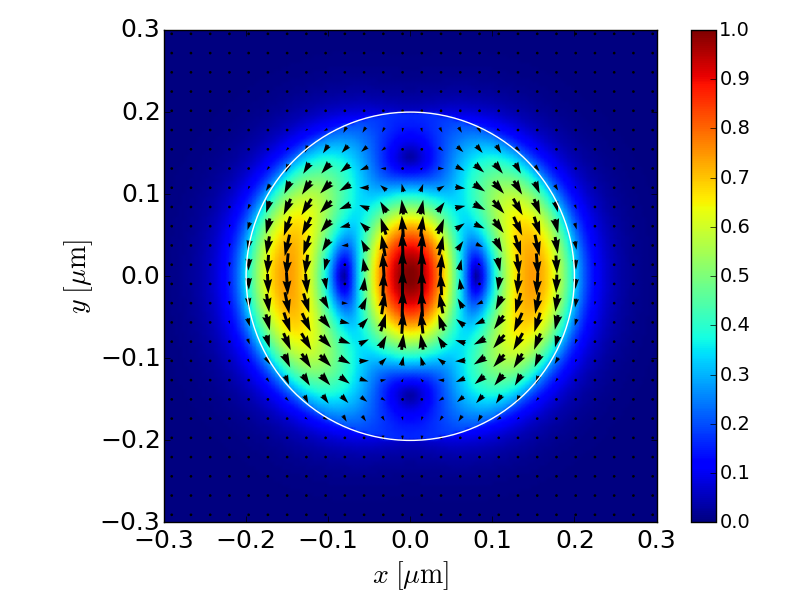

* HE21
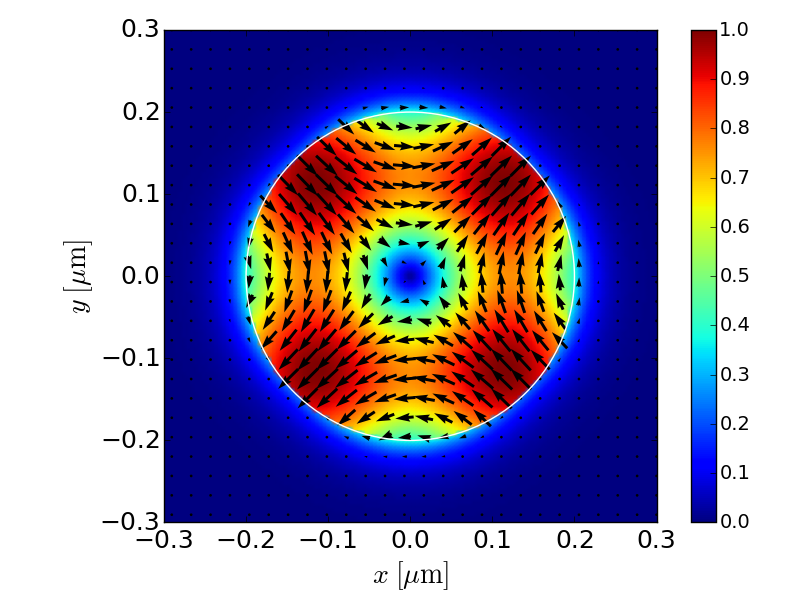
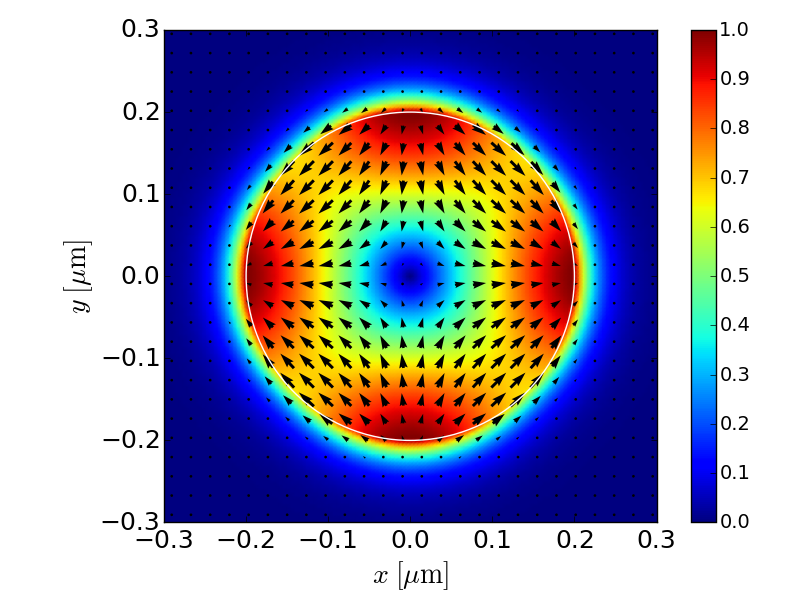
* HE31
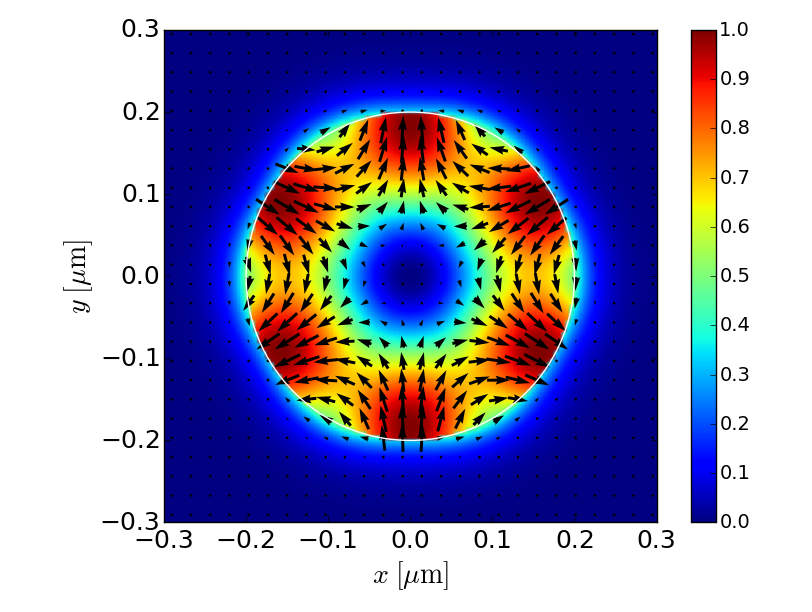

* TM01
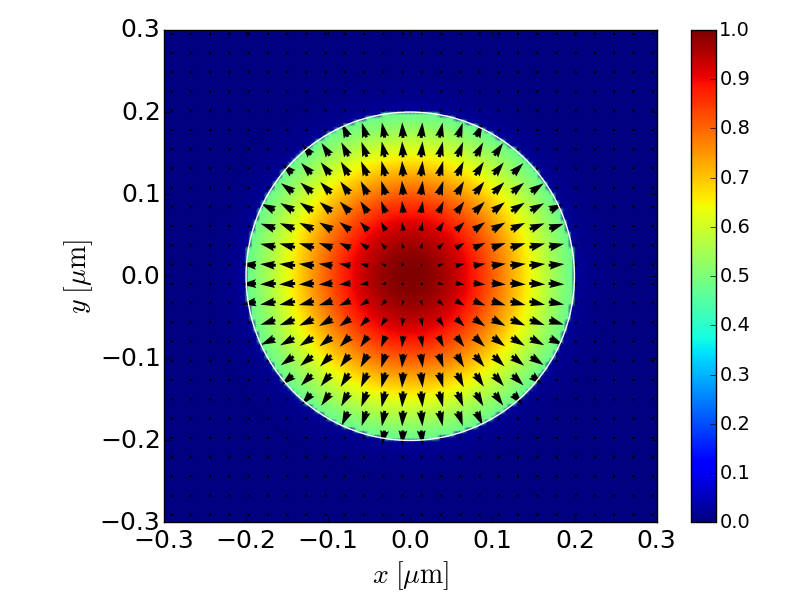

* TM02
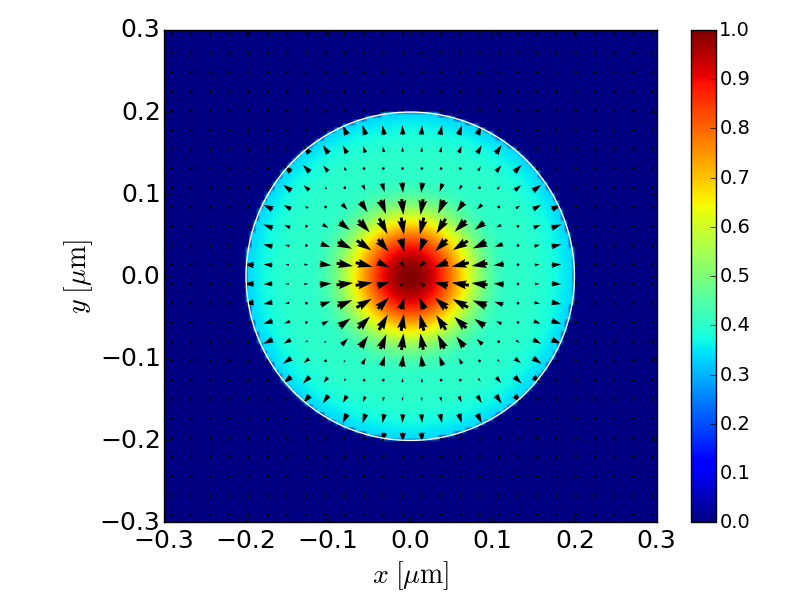
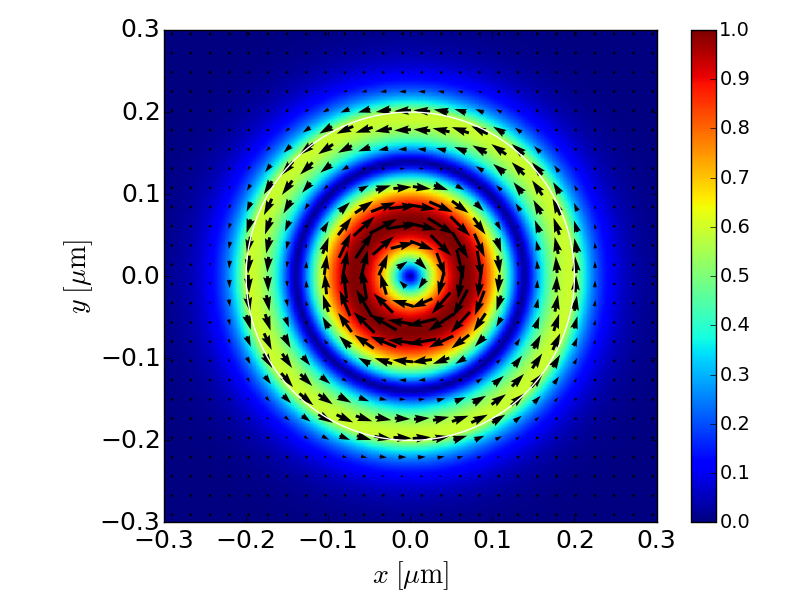
* EH11
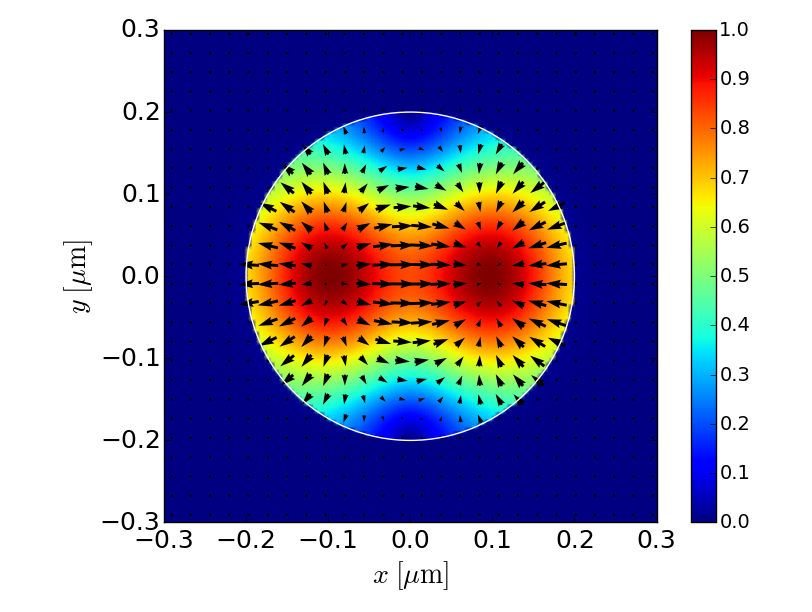
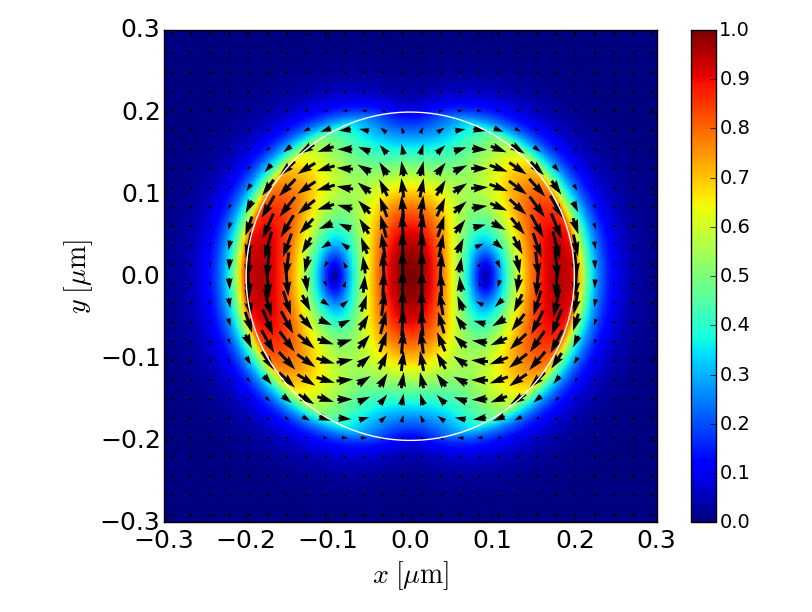
* EH21
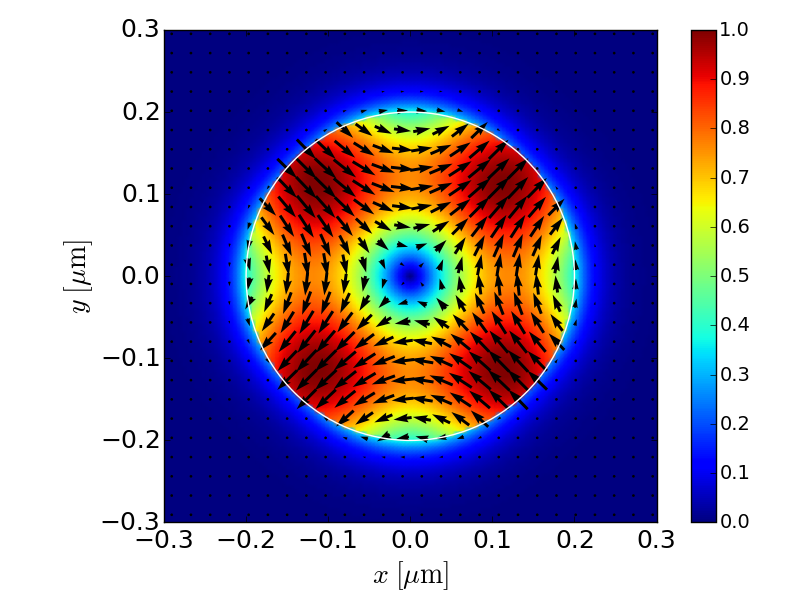
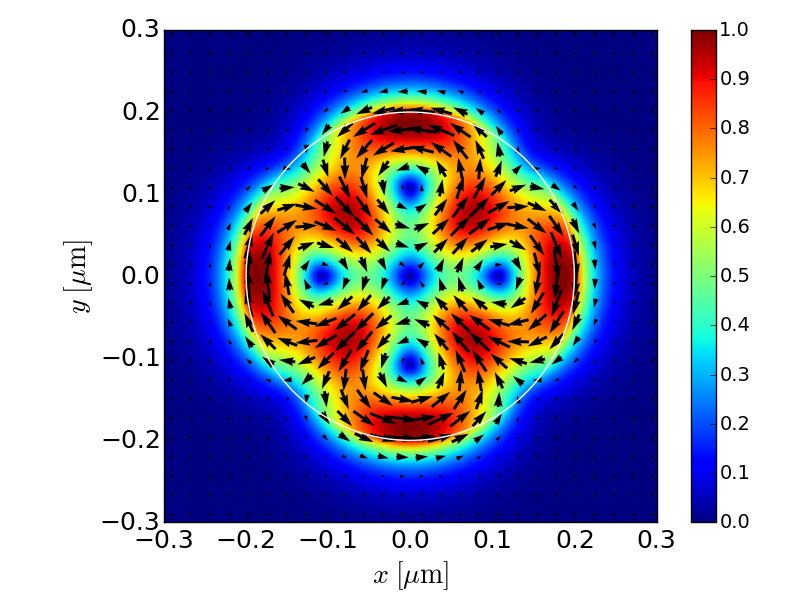
### Slit waveguide
#### Propagation constants
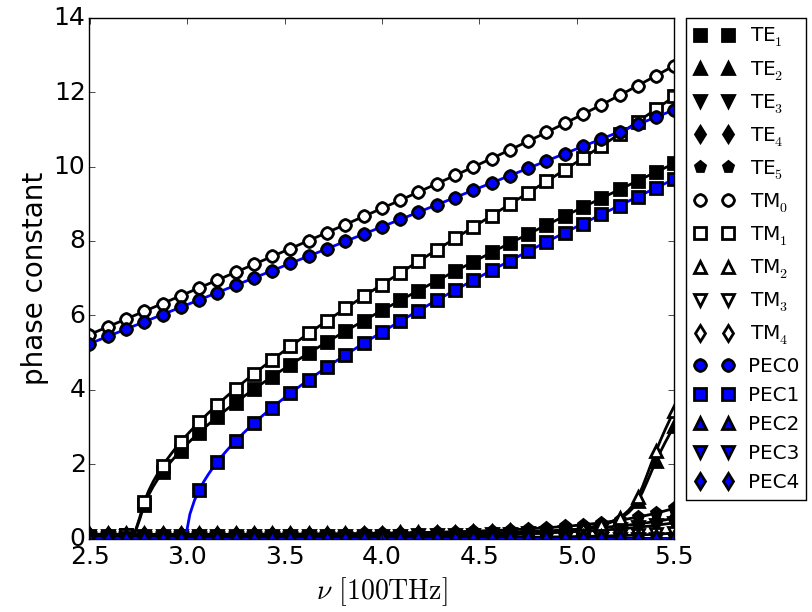
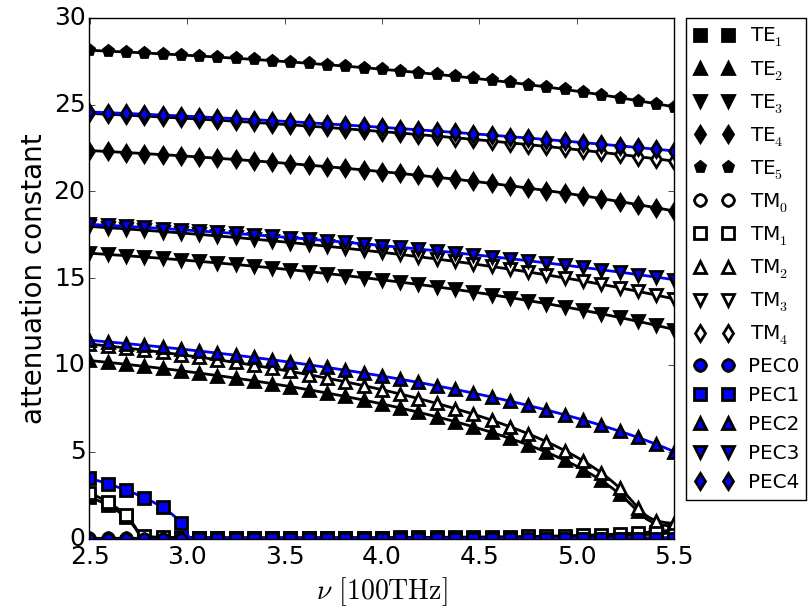
#### Electric field and magnetic field distributions
* TE1

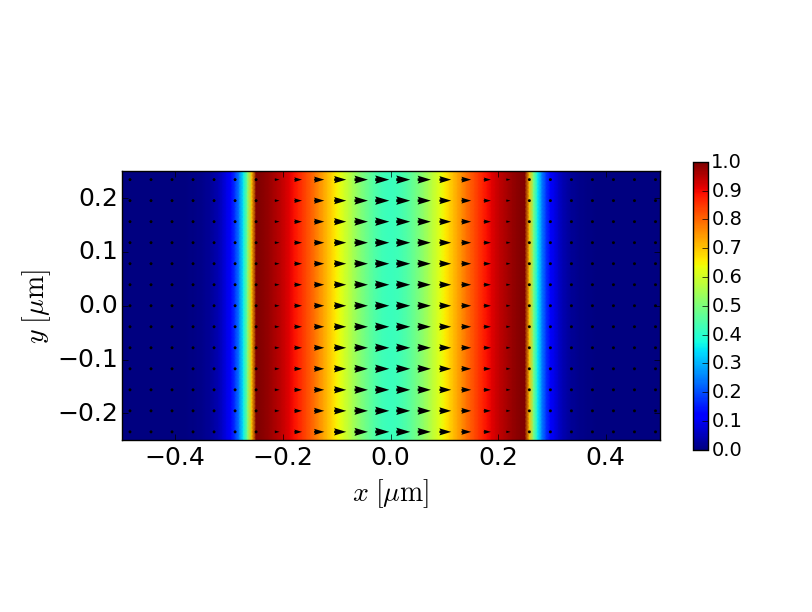
* TE2
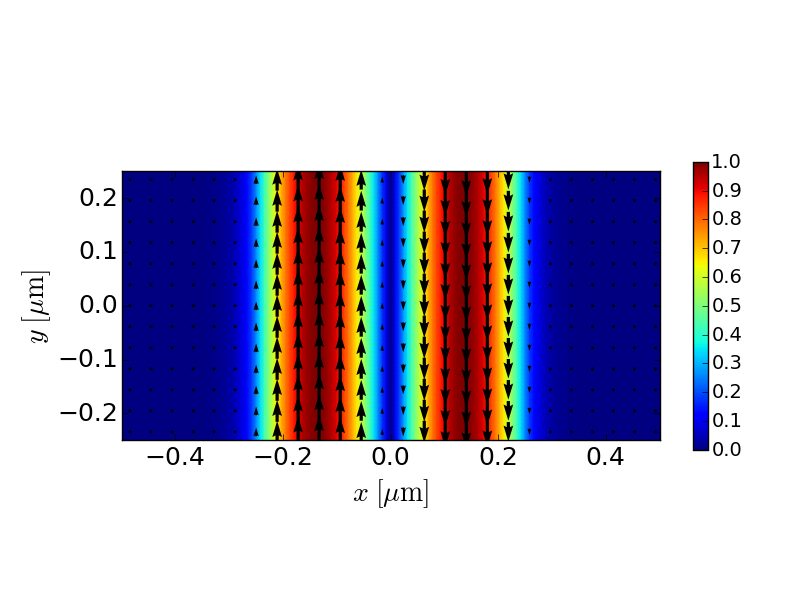
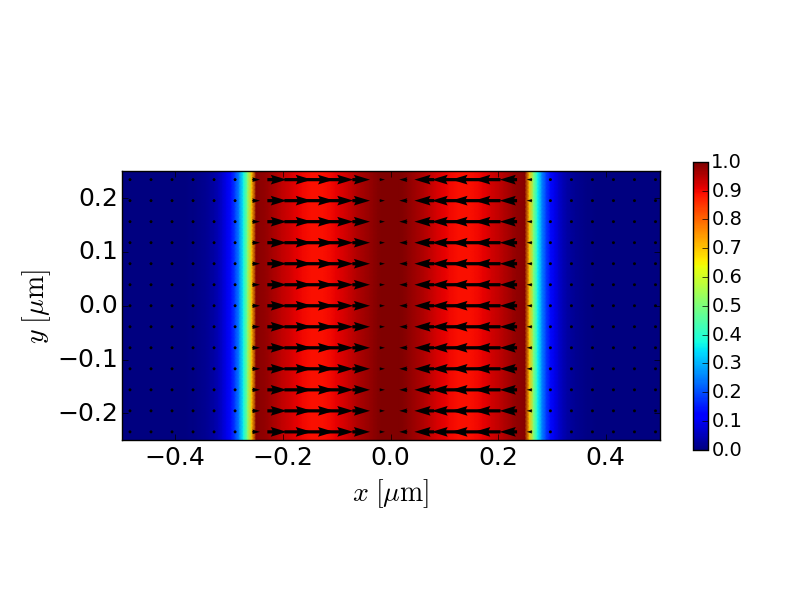
* TE3
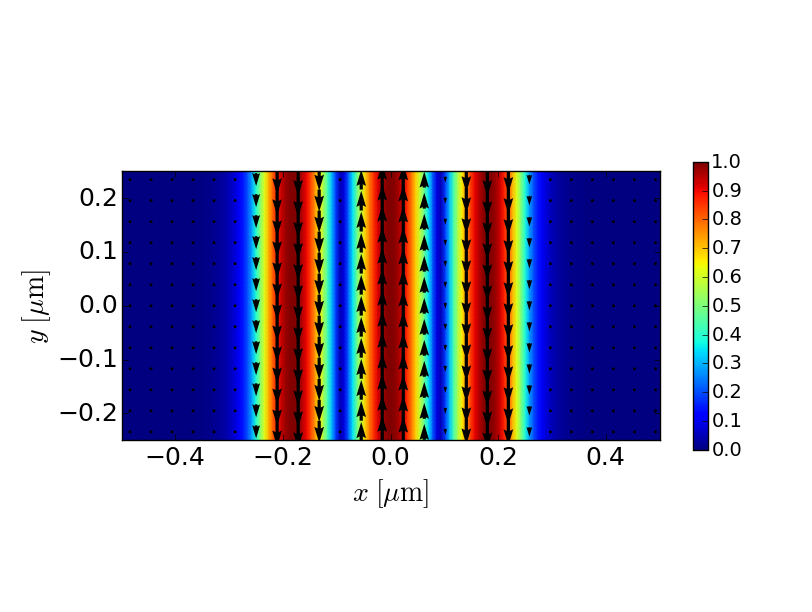
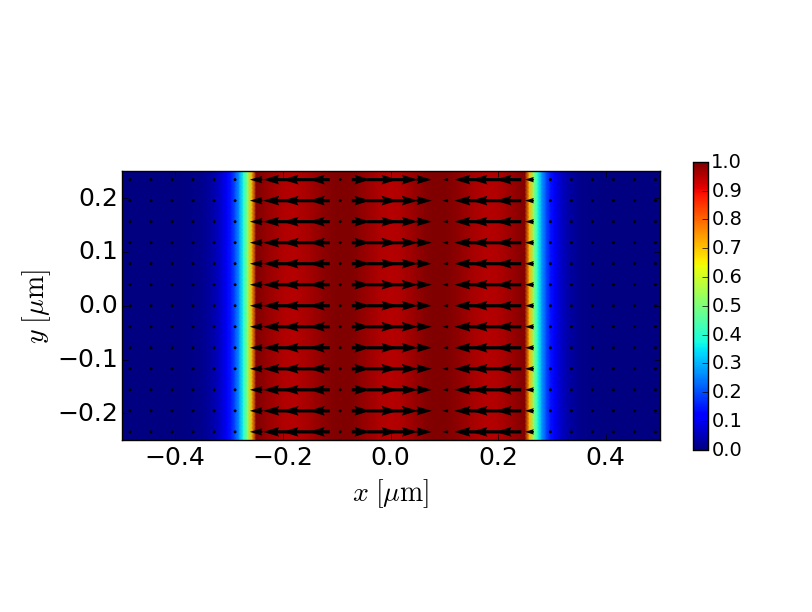
* TE4
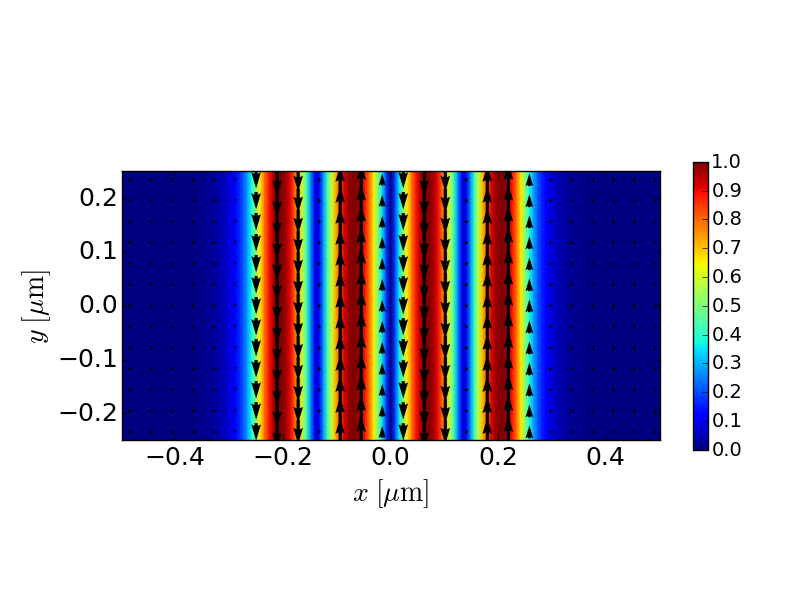
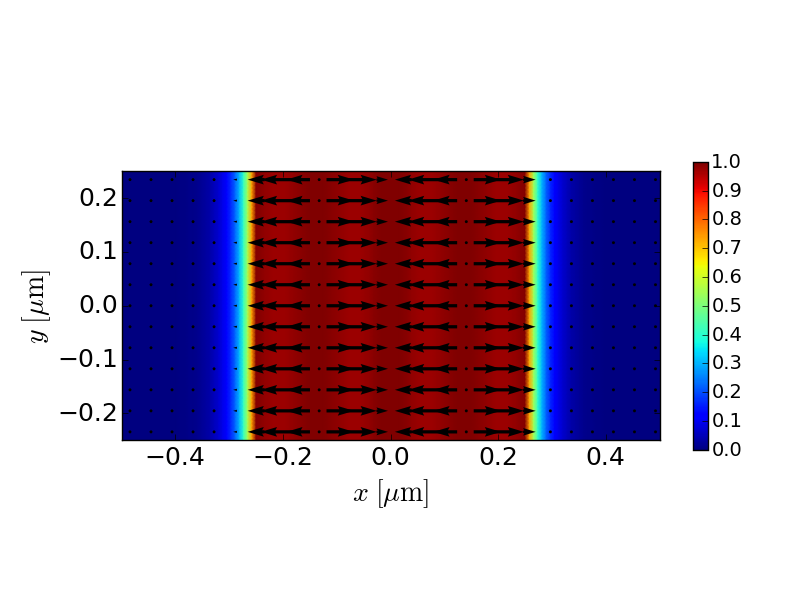
* TM0

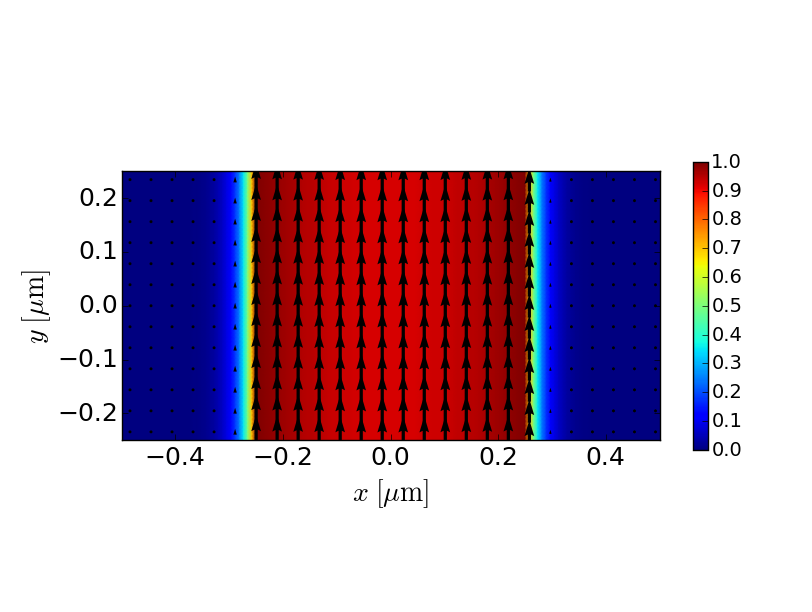
* TM1
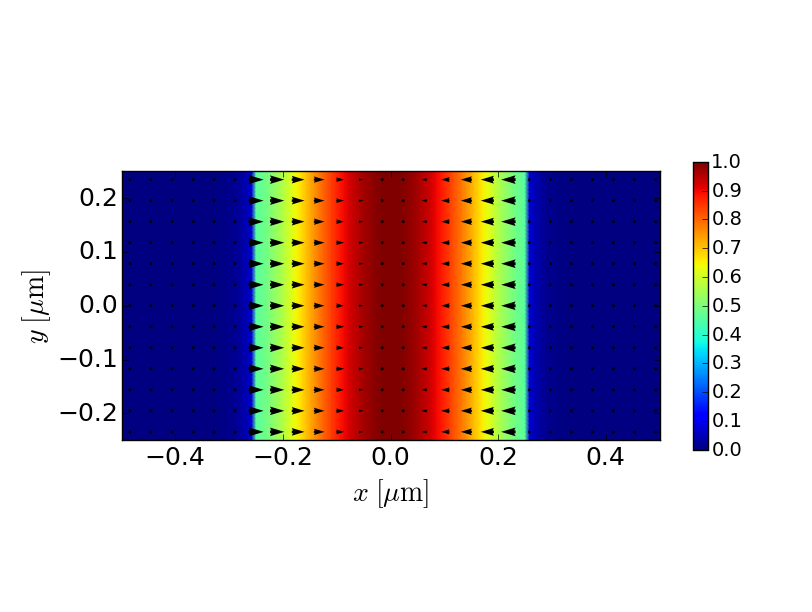
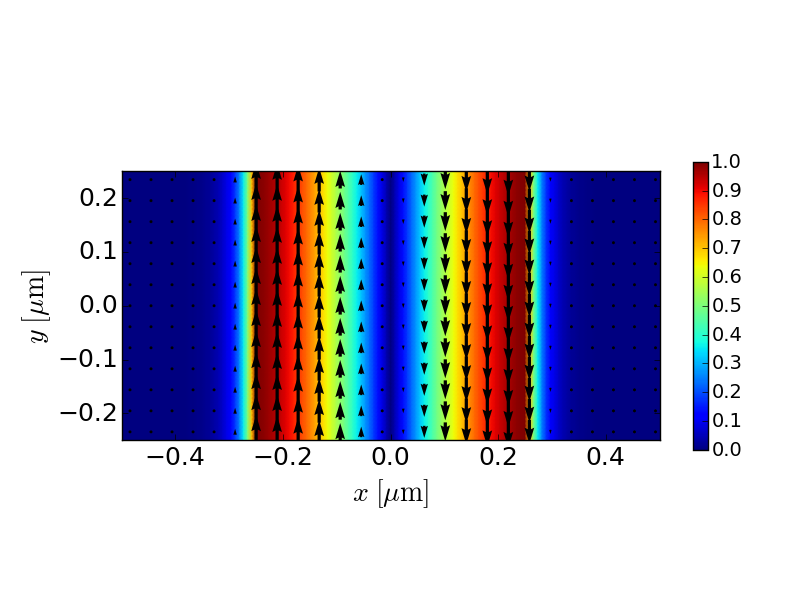
* TM2

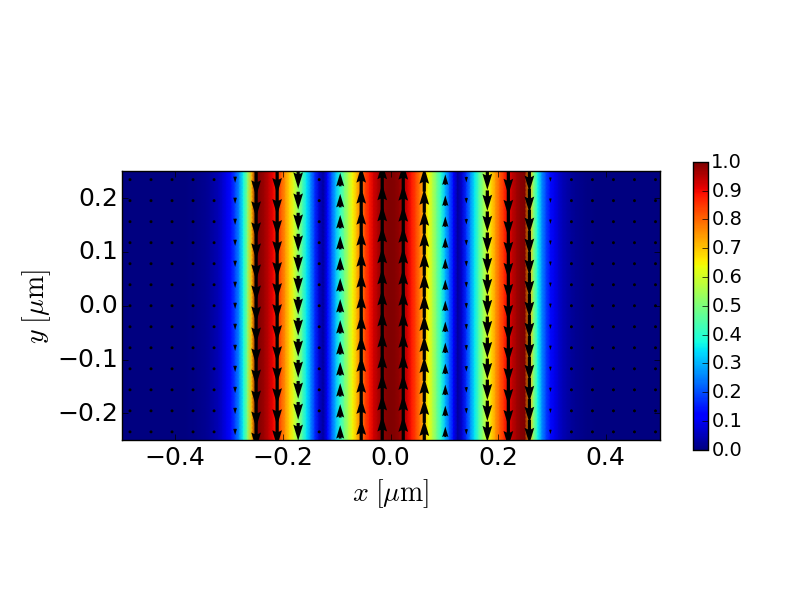
* TM3
